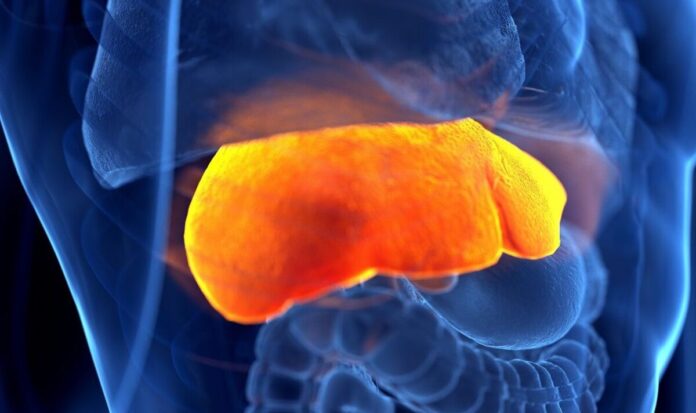The bacteria that causes leprosy – one of the world’s oldest human diseases – have the ability to reprogram the cells of livers in adult armadillos. The result was an increase of the organs’ sizes without damage, scarring or tumour generation. This is the finding of a study by researchers from the University of Edinburgh, which could be employed to help renew ageing livers and increase the time people live disease-free. In addition, the finding could allow scientists to regrow livers damaged by, for example, alcohol misuse, hepatitis infection or obesity. This would reduce demand for transplantation, which is presently the only option for those patients with end-stage scarred livers.The work builds on previous studies into promoting the regrowth of mouse livers that worked by generating stem cells and their successors, progenitor cells. These have the ability to become any type of cell needed for a given organ.The problem with these approaches, however, is that they relied on a particularly invasive technique. This often resulted in scarring – or even tumour growth.To overcome these issues, the researchers took advantage of a useful discovery from a previous piece of research. This concerned how the leprosy-causing bacteria, Mycobacterium leprae, has a partial cellular reprogramming ability.In their latest work, the researchers teamed up with the US Department of Health and Human Services in Baton Rouge, Louisiana. Their experiment involved the infection with leprosy of 57 armadillos – known natural hosts of M. leprae. The bacteria that cause leprosy can reprogram the cells of livers in armadillos (Image: Getty Images) Leprosy is one of the oldest human diseases, the researchers said (Image: Getty Images)Having infected the animals with leprosy, the team compared the animals’ lives with those of uninfected armadillos. They also looked at those that were found to be resistant to infection.They found that the animals they had infected with the bacteria developed livers that were enlarged compared to both the uninfected and disease-resistant armadillos. In all other respects, however, the enlarged livers were healthy and unharmed.The researchers believe that the bacteria ‘hijacked’ the inherent regenerative ability of the liver to increase the organ’s size. In the process, therefore, it provided it with more cells to allow it to reach a larger size.Alongside the enlargement of the organs, the team also found several indicators that the main kinds of liver cells, known as hepatocytes, had reached a ‘rejuvenated’ state in the infected armadillos. In fact, their livers contained so-called gene expression patterns – essentially, the blueprint for building cells – that were similar to those found in younger animals and foetal livers in humans.READ MORE: Scientists make big breakthroughs in reversing ageing in humans The researchers experimented with armadillos, which are natural hosts of Mycobacterium leprae (Image: Getty Images) The livers of infected armadillos (right) were enlarged compared to their uninfected peers (left) (Image: Hess et al. / Cell Reports Medicine)In the infected armadillos, the team added, genes associated with metabolism, growth and cell proliferation appeared activated. At the same time, those linked to ageing were ‘downregulated’, or suppressed.According to the experts, the leprosy bacteria act to reprogram the liver cells. Specifically, they returned them to the progenitor cell stage.These progenitor cells then went on to become hepatocytes. This then effectively made new liver tissues in the infected armadillos.The team believes that it may eventually be possible to translate this process into humans. This could allow new medical interventions for the treatment of ageing and damaged livers.DON’T MISS:World hits 8bn people as countries with biggest populations unveiled [REPORT]Rishi Sunak urged to ‘immediately’ scrap heat pump payment scheme [INSIGHT]Study claims French people locked in ‘laziness epidemic’ [ANALYSIS] The findings could help increase people’s healthspans, the researchers said (Image: Express.co.uk)The study was lead by regenerative medicine expert Prof. Anura Rambukkana of the University of Edinburgh. She said: ‘If we can identify how bacteria grow the liver as a functional organ without causing adverse effects in living animals, we may be able to translate that knowledge to develop safer therapeutic interventions to rejuvenate ageing livers and to regenerate damaged tissues.’Stem cell biologist Dr Darius Widera of the University of Reading – who was not involved in the present study – said: ‘This is an exciting study demonstrating that under certain circumstances, fully specialized armadillo liver cells can be reverted to a juvenile state and regenerate adult armadillo liver tissue. The authors have used an experimental approach they originally developed to rejuvenate cells of the nervous system in a dish.”Briefly, they exploited infection with leprosy-causing bacteria to achieve a cellular reprogramming of the liver cells to a premature state. This caused the livers to grow without tumour formation or changes in the organ architecture. Overall, the results could pave the way for new therapeutic approaches to the treatment of liver diseases such as cirrhosis.’However, as the research has been done using armadillos as model animals, it is unclear if and how these promising results can translate to the biology of the human liver. Moreover, as the bacteria used in this study are disease-causing, substantial refinement of the methods would be required prior to clinical translation.’The full findings of the study were published in the journal Cell Reports Medicine.


